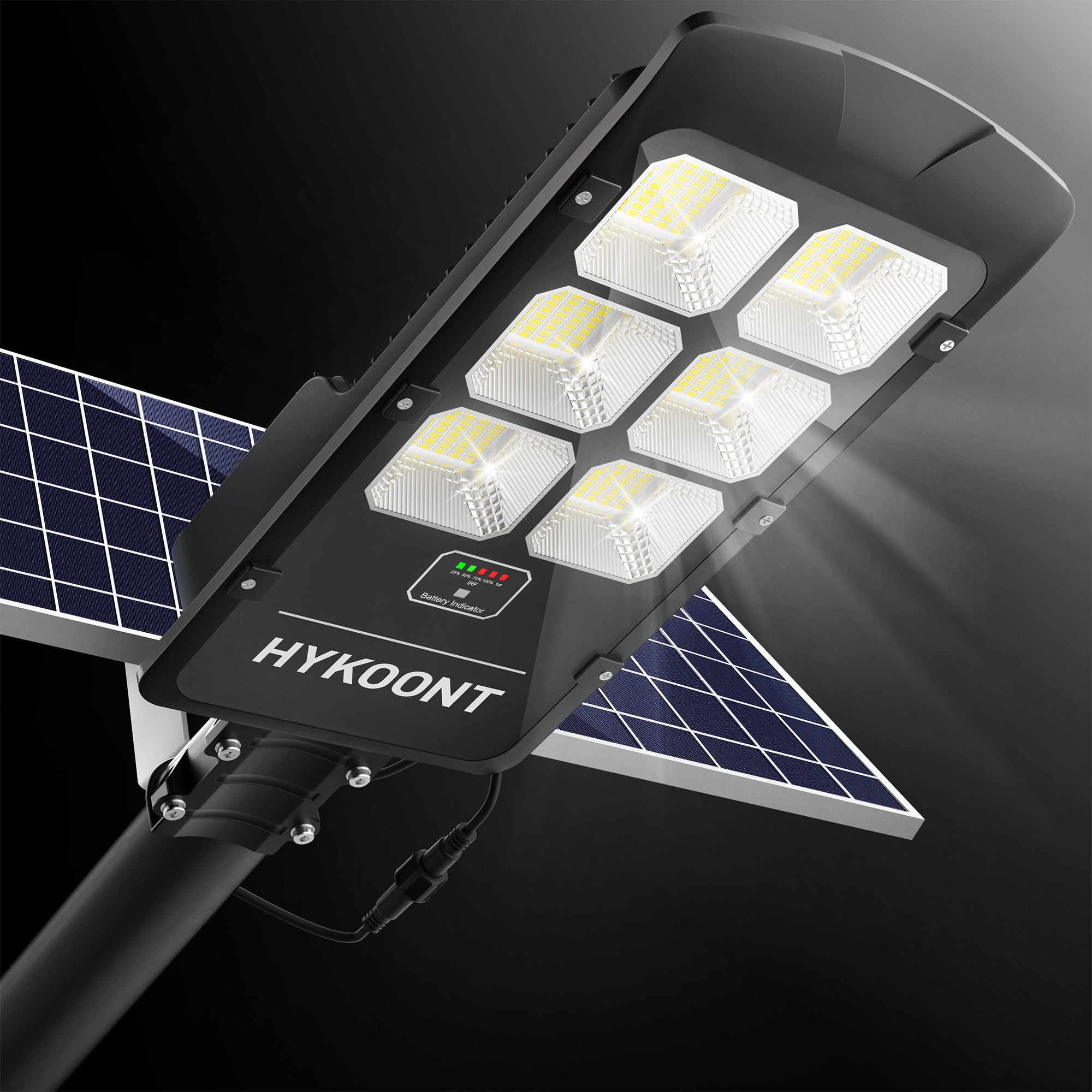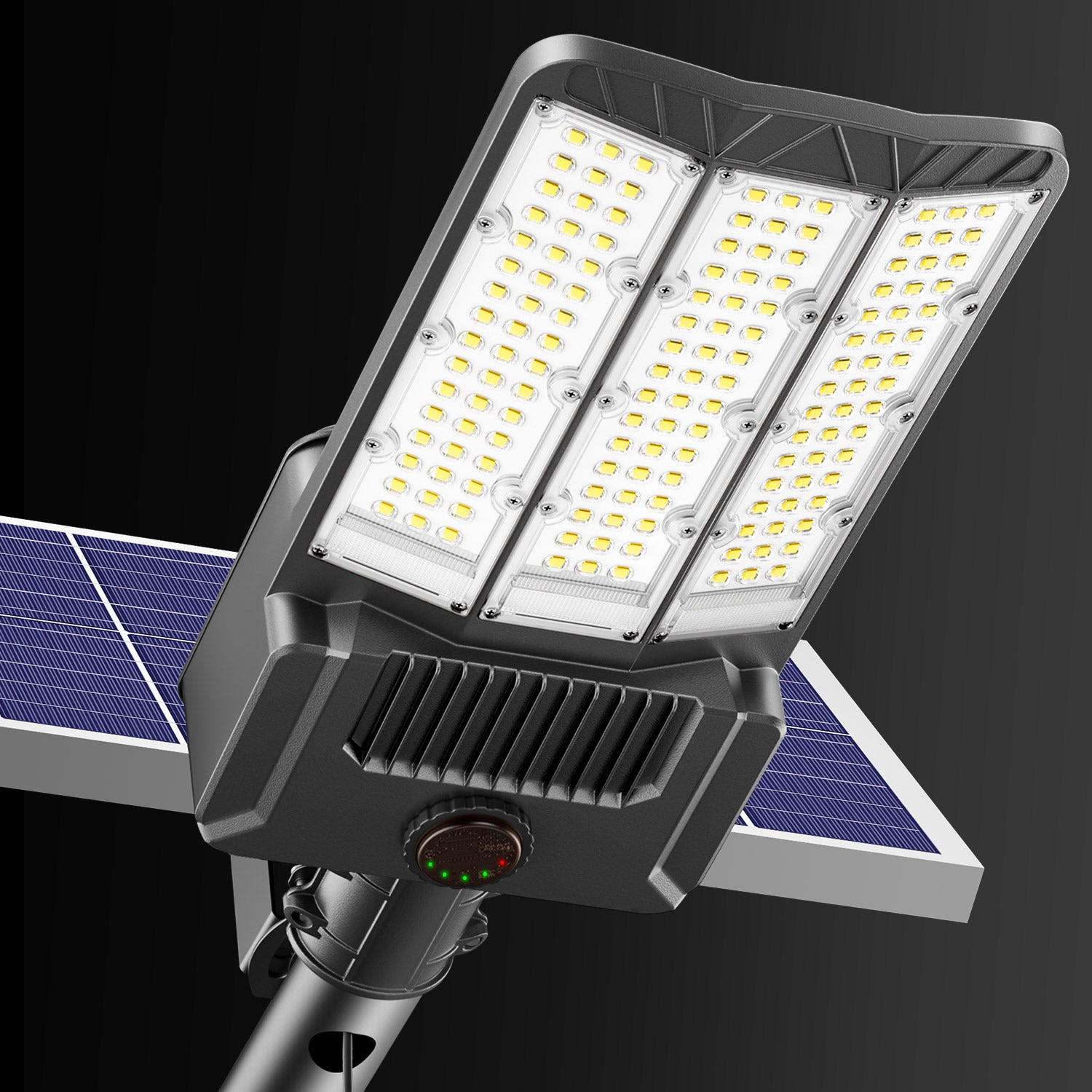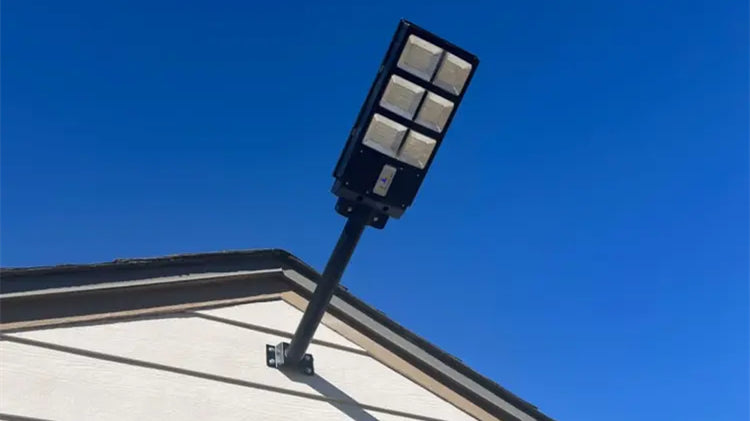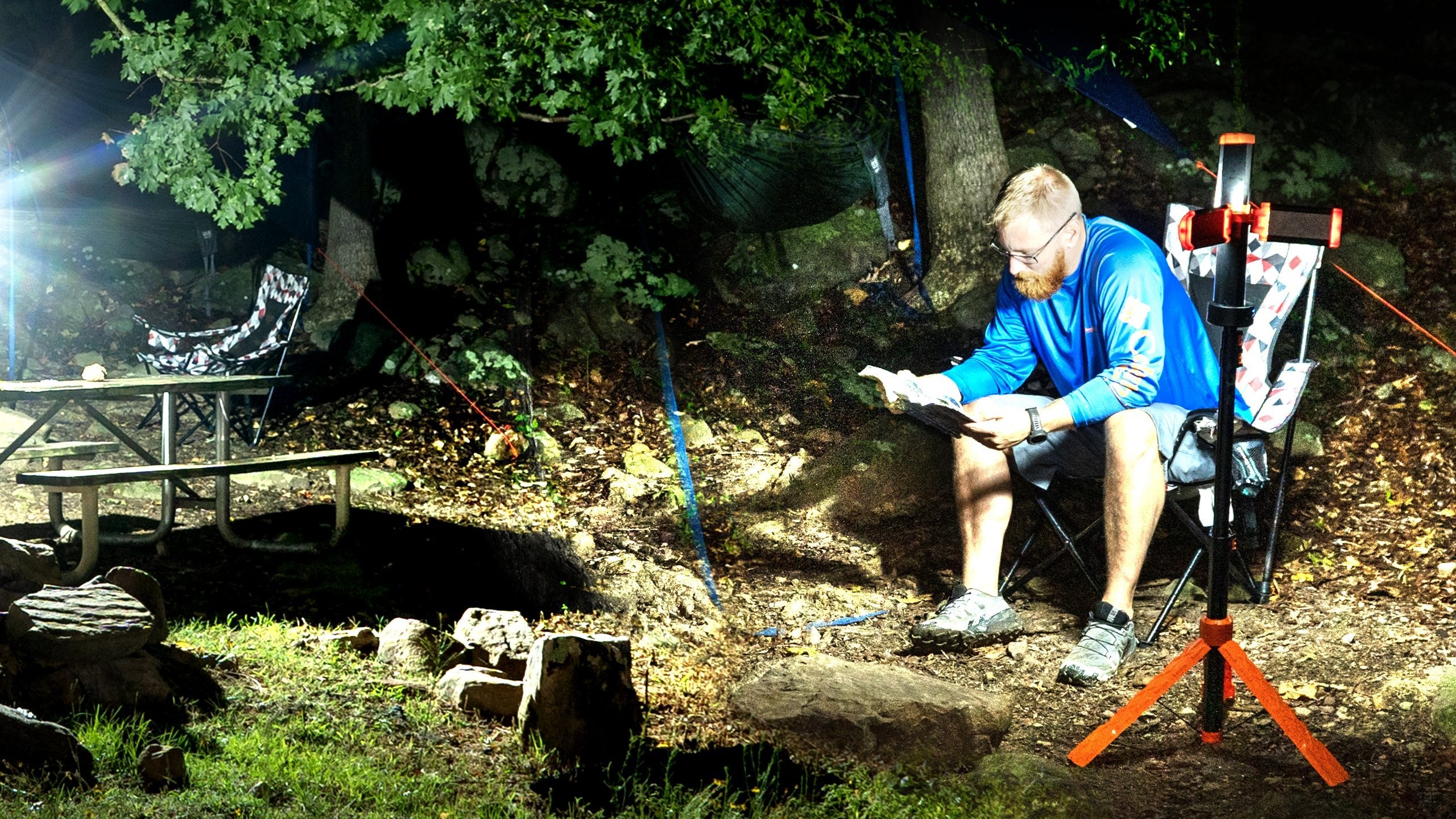تُعد الأضواء الشمسية خيار إضاءة شائع وصديق للبيئة للعديد من أصحاب المنازل، حيث توفر طريقة مريحة ومستدامة لإضاءة المساحات الخارجية دون الاعتماد على الكهرباء. وفي حين أن الأضواء الشمسية فعّالة ومنخفضة التكلفة، فإن السؤال الذي يُطرح غالبًا هو: هل تحتاج الأضواء الشمسية إلى ضوء الشمس المباشر لتعمل بشكل فعال؟ باختصار، في حين أن ضوء الشمس المباشر مثالي، إلا أن الأضواء الشمسية لا تزال تعمل بدونه، على الرغم من أن الأداء قد يختلف بناءً على نوع وكمية الضوء المستلمة. هنا، سنستكشف كيفية عمل الأضواء الشمسية، وكيف يؤثر ضوء الشمس على وظائفها، وطرق تحسين الأداء حتى في ظروف الإضاءة المنخفضة.
كيف تعمل الأضواء الشمسية؟
لفهم سبب لعب ضوء الشمس دورًا حاسمًا في الأضواء الشمسية، من المفيد معرفة القليل عن تصميمها وتشغيلها. تعتمد الأضواء الشمسية على الخلايا الكهروضوئية (PV) لتحويل ضوء الشمس إلى كهرباء. فيما يلي شرح سريع لكيفية عملها:
- امتصاص ضوء الشمس : تقوم الألواح الشمسية الموجودة على الضوء بامتصاص ضوء الشمس أثناء النهار، حتى ضوء الشمس غير المباشر، وتحويله إلى كهرباء.
- تخزين الطاقة : يتم تخزين الكهرباء المولدة في بطاريات قابلة لإعادة الشحن، والتي تعمل بمثابة احتياطي للطاقة.
- الإضاءة : عندما يحل الليل، تستخدم الأضواء الطاقة المخزنة لإضاءة المكان.
هذه الدورة الأساسية هي التي تسمح للمصابيح الشمسية بأن تكون مكتفية ذاتيًا وصديقة للبيئة. ومع ذلك، فإن كمية وكثافة ضوء الشمس الذي تتلقاه تؤثر بشكل مباشر على كمية الطاقة المخزنة - وبالتالي، سطوع الضوء ومدته.

هل تحتاج مصابيح الطاقة الشمسية إلى ضوء الشمس المباشر للشحن؟
ضوء الشمس المباشر هو المصدر الأكثر كفاءة للطاقة بالنسبة للأضواء الشمسية. عندما تتلقى الألواح الشمسية ضوء الشمس المباشر دون عوائق ، فإنها يمكن أن تنتج أقصى قدر من الطاقة، مما يؤدي إلى شحن البطارية بالكامل. وهذا يضمن أن الأضواء الشمسية يمكن أن تتألق بأقصى سطوع لها ولأطول فترة كل ليلة.
ومع ذلك، في حين أن ضوء الشمس المباشر هو الخيار الأمثل، إلا أنه ليس شرطًا صارمًا. لا تزال الألواح الشمسية قادرة على التقاط وتحويل الضوء المحيط أو ضوء الشمس غير المباشر ، على الرغم من أن هذه العملية أقل كفاءة. في مثل هذه الحالات، تؤثر الظروف التالية على أداء الضوء:
- الأيام الملبدة بالغيوم أو الغائمة : في الأيام الملبدة بالغيوم، قد تولد الألواح الشمسية حوالي 10-20% فقط من الطاقة التي قد تولدها تحت أشعة الشمس الكاملة. وهذا يعني أنه على الرغم من أن الأضواء قد لا تزال تعمل، إلا أنها قد تكون باهتة أو تدوم لفترة أقصر.
- الظل الجزئي : إذا تم وضع الأضواء الشمسية في منطقة مظللة (تحت الأشجار أو بجوار المباني)، فستظل تجمع بعض الضوء المحيط، لكن كفاءة شحنها ستكون أقل. ومن المرجح أن يؤدي الظل الجزئي إلى تقصير أوقات الإضاءة.
- المناطق الشتوية أو المناطق ذات الإضاءة المنخفضة : في الأماكن ذات ضوء النهار المحدود أو الشتاء القارس، لن تتلقى المصابيح الشمسية قدرًا كبيرًا من ضوء الشمس، مما يؤثر على أدائها. خلال أشهر الشتاء، قد تؤدي الأيام الأقصر وأشعة الشمس الأضعف إلى بطء الشحن وانخفاض الإضاءة.
أنواع الأضواء الشمسية واحتياجاتها من ضوء الشمس
قد تختلف المتطلبات المحددة لأشعة الشمس وفقًا لنوع الضوء الشمسي والغرض منه. تتضمن بعض الأنواع الشائعة ما يلي:
- أضواء الممرات : تتطلب هذه الأضواء الأصغر حجمًا طاقة أقل لتشغيلها، لذا قد تعمل بشكل جيد مع شحن جزئي، حتى بدون ضوء الشمس الكامل. ومع ذلك، قد لا تكون ساطعة أو قد تدوم لساعات أقل في الليل.
- الأضواء الكاشفة والكشافات : تحتاج الأضواء الشمسية الأكبر حجمًا، مثل الأضواء الأمنية أو الأضواء الكاشفة، إلى مزيد من الطاقة لتعمل على النحو الأمثل، حيث إنها مصممة لإصدار شعاع ضوء أقوى وأكثر تركيزًا. تحتاج هذه الأضواء عادةً إلى عدة ساعات من ضوء الشمس المباشر كل يوم لتعمل بكامل طاقتها.
- الأضواء الزخرفية : الأضواء الزخرفية، مثل الأضواء الخيطية، عادة ما تكون منخفضة الطاقة وقد تعمل بشكل جيد نسبيًا في ضوء الشمس غير المباشر أو وقت الشحن المحدود. ومع ذلك، في ظروف الإضاءة المنخفضة، قد تظل مضاءة لبضع ساعات فقط بعد الغسق.
تحسين أداء الضوء الشمسي في ظل ظروف ضوء الشمس المنخفض
على الرغم من أن ضوء الشمس المباشر هو الخيار المثالي، إلا أن هناك العديد من الاستراتيجيات التي تساعد على تعظيم فعالية الأضواء الشمسية حتى في المناطق المظللة أو المناطق ذات ضوء الشمس الأقل:
- أهمية تحديد المواقع : ضع المصابيح الشمسية في المكان الذي ستتلقى فيه أكبر قدر ممكن من ضوء الشمس طوال اليوم. تجنب المناطق المظللة وضعها في أماكن مواجهة للجنوب (في نصف الكرة الشمالي) للحصول على أفضل تعرض لأشعة الشمس.
- قم بإمالة الألواح الشمسية : إذا كانت مصابيحك الشمسية تحتوي على ألواح قابلة للتعديل، فقم بإمالتها بحيث تواجه مسار الشمس. وهذا يزيد من كمية ضوء الشمس التي تمتصها خلال النهار، وهو أمر مفيد بشكل خاص خلال فصل الشتاء عندما تكون الشمس منخفضة في السماء.
- حافظ على نظافة الألواح الشمسية : يمكن للأوساخ والغبار والحطام أن يمنع أشعة الشمس من الوصول إلى الخلايا الشمسية. قم بتنظيف سطح اللوحة الشمسية بانتظام لضمان أقصى قدر من امتصاص أشعة الشمس.
- فكر في الألواح عالية الكفاءة : تستخدم بعض مصابيح الطاقة الشمسية خلايا ضوئية متطورة، مثل الألواح أحادية البلورة، والتي تكون أكثر كفاءة في ظروف الإضاءة المنخفضة. تميل هذه الأنواع من المصابيح إلى الأداء بشكل أفضل حتى عندما يكون ضوء الشمس محدودًا.
- استخدم الأضواء الشمسية مع بطاريات احتياطية : تأتي بعض الأضواء الشمسية مع خيار التكملة ببطاريات AA، مما يسمح لها بالعمل لفترة أطول في الأيام الغائمة أو في الشتاء عندما يكون ضوء الشمس خفيفًا.

بدائل للإضاءة المتناسقة في المناطق ذات ضوء الشمس المنخفض
إذا كان لديك منطقة محددة لا تتلقى الكثير من ضوء الشمس ولكنها تتطلب إضاءة ثابتة، فهناك بعض البدائل:
- المصابيح الشمسية الهجينة : توفر بعض المصابيح الشمسية خيار التبديل بين مصادر الطاقة الشمسية والتقليدية. ويمكن توصيل هذه المصابيح بمصدر طاقة عادي عند الحاجة، مما يضمن بقائها مضاءة حتى في الأيام الملبدة بالغيوم.
- الألواح الشمسية عن بعد : تسمح بعض المصابيح الشمسية بإعداد الألواح الشمسية عن بعد. وهذا يعني أنه يمكنك وضع اللوحة الشمسية في منطقة أكثر تعرضًا لأشعة الشمس، بينما يقع الضوء نفسه في مكان مظلل، مما يمنحك مرونة في وضع الألواح الشمسية.
النتيجة: هل تحتاج الأضواء الشمسية إلى ضوء الشمس المباشر؟
باختصار، لا تحتاج مصابيح الطاقة الشمسية إلى ضوء الشمس المباشر للعمل ، ولكن ضوء الشمس المباشر ضروري للأداء الأمثل. عندما تتعرض مصابيح الطاقة الشمسية لأشعة الشمس المباشرة الكاملة، يمكنها تخزين المزيد من الطاقة، مما يؤدي إلى إضاءة أكثر سطوعًا وأطول أمدًا في الليل. على الرغم من أن مصابيح الطاقة الشمسية لا تزال قادرة على الشحن في ضوء الشمس غير المباشر أو الضوء المحيط، فإن الكفاءة المنخفضة ستؤدي عمومًا إلى أوقات إضاءة أقصر ومستويات سطوع أقل.
للاستفادة القصوى من مصابيحك الشمسية، ضعها في مناطق تتعرض لأقصى قدر من أشعة الشمس وفكر في استخدام نماذج بألواح عالية الكفاءة أو بطاريات تكميلية إذا كنت تعيش في مناطق ذات إضاءة منخفضة. من خلال فهم كيفية تأثير أشعة الشمس على مصابيح الطاقة الشمسية، يمكنك الاستمتاع بفوائدها بثقة، مع العلم أنك تستفيد إلى أقصى حد من حل الإضاءة الصديق للبيئة والمستدام هذا.





















اترك تعليقًا
This site is protected by hCaptcha and the hCaptcha Privacy Policy and Terms of Service apply.